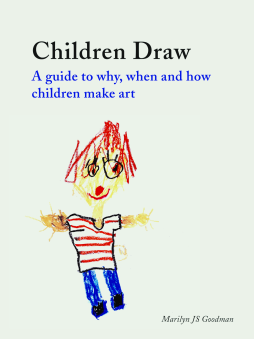
Additional Information
Book Details
Abstract
Aimed at parents and caregivers, this book explores the meaning and value of drawing for youngsters, from toddlers aged two to preadolescents aged twelve. Informed by psychology and practical teaching with children, it guides readers through the progressive stages and characteristics of drawing development as children change mentally, physically, socially, emotionally, and creatively. It offers tips to encourage children to express their ideas visually and recommends age-appropriate art materials, workspaces, and different media. It also gives suggestions for making a museum visit more meaningful—not to mention more fun—for both parents and kids. Packed with delightful examples of children’s art, Children Draw is an essential book for parents interested in their child’s art activities.
"With a passion for the magic and importance of early childhood drawing and painting, Goodman successfully demystifies this complex activity, essential to children’s development. Goodman’s wisdom and knowledge offers a concise and refreshing look into the history and meaning of children’s art making, tracking important age-appropriate developments through abundant illustrations and insightful observations. Children Draw is an essential guide for parents and caregivers seeking to support this vital component in their child’s creative learning."
— Philip Matsikas, fine arts teacher, University of Chicago Laboratory Schools
"Goodman’s love and respect for children is evident throughout this brilliant investigation of how and why children draw. As a working artist, an uncle, and a grown-up version of a boy who loved to make pictures, I wholeheartedly recommend this book to any adult with a child in their life as well as anyone interested in drawing and the many ways it functions for children during the various stages of their development."
— Alexander Stadler, author and illustrator of the Beverly Billingsly series, the Julian Rodriguez books, and several other books for children
"Goodman’s delightfully illustrated and highly accessible text celebrates our imagination. In sharing her valuable insights, she reminds us that taking pencil to paper remains an essential human action. This book will help adults nurture a child’s personal development and expressive skills that will last their lifetime."
— Erika Sanger, Executive Director, Museum Association of New York
"Informed both by psychology and teaching, and aimed at parents and carers, this richly illustrated book is a fascinating exploration both of why children draw, and the meaning and value of drawing for young people. Some of the art examples are truly wonderful."
— Bookseller
“Having enjoyed watching my children draw over the years, I found this book fascinating. Goodman looks at each of the five stages in children‘s drawing development, explaining what is going on at each stage, such as how scribbling is primarily a physical enjoyment while making large muscle movements; when children discover they can transform a line into an enclosed shape; and why many preadolescent children feel more comfortable drawing anime characters.”
— JUNO Magazine
“This beautifully illustrated book by Goodman, jam-packed with real examples of children’s drawings, takes readers through the different stages of drawing from scribbling and basic human forms through to visual schema and realism. Each one illustrates the well-researched text exploring how drawing processes help children express themselves and make meaning in the world, with super insights into what’s going on, such as when children’s drawings are disturbing. The book is full of excellent ideas and guidance on how to enable the best drawing possible, including which tools, resources, environments, attitudes will either help or hinder your child’s drawing, and how your emotional or value judgements have an impact on the way children draw. Aimed at parents and teachers alike, this is an essential MUST-HAVE in your creative armory.”
— Early Arts Magazine
Marilyn JS Goodman, EdD, is an art and museum education specialist who served as the first director of education for the Solomon R. Guggenheim Museum, the first director of the Children’s Museum of Cincinnati, and director of K-12 art for the Worcester Public Schools. She has also taught art in public schools as well as at Clark University, Moore College of Art and Design, and the City College of New York. She is coauthor of Learning through Art.
Table of Contents
| Section Title | Page | Action | Price |
|---|---|---|---|
| Cover | Cover | ||
| Title Page | 3 | ||
| Imprint Page | 4 | ||
| Contents | 5 | ||
| Introduction | 7 | ||
| Why? | 13 | ||
| Why?: Decoding Children’s Drawing | 15 | ||
| A Bit of History, or Who Cared? | 16 | ||
| Why Do Kids Draw? | 20 | ||
| Understanding Growth | 21 | ||
| A Work of Art? | 31 | ||
| Inspiration | 41 | ||
| Disturbing Subject-matter | 53 | ||
| A Language of Symbols | 55 | ||
| When? | 57 | ||
| When?: Children’s Drawing Development | 59 | ||
| Developmental Stages in Children’s Artistic Expression | 65 | ||
| Stage 1: Scribbling | 68 | ||
| Stage 2: Basic Forms | 79 | ||
| Stage 3: Human Forms and Beginning Schemata | 87 | ||
| Stage 4: Development of a Visual Schema | 111 | ||
| Stage 5: Realism | 121 | ||
| How? | 141 | ||
| How?: Encouraging Your Child to Draw | 143 | ||
| Space | 144 | ||
| Tools and Materials | 152 | ||
| Opportunity and Guidelines | 160 | ||
| Time | 161 | ||
| Attitude | 162 | ||
| The Good, the Bad and the Maybe | 172 | ||
| Pictures at an Exhibition | 179 | ||
| Works Cited | 188 | ||
| Acknowledgements | 190 |
